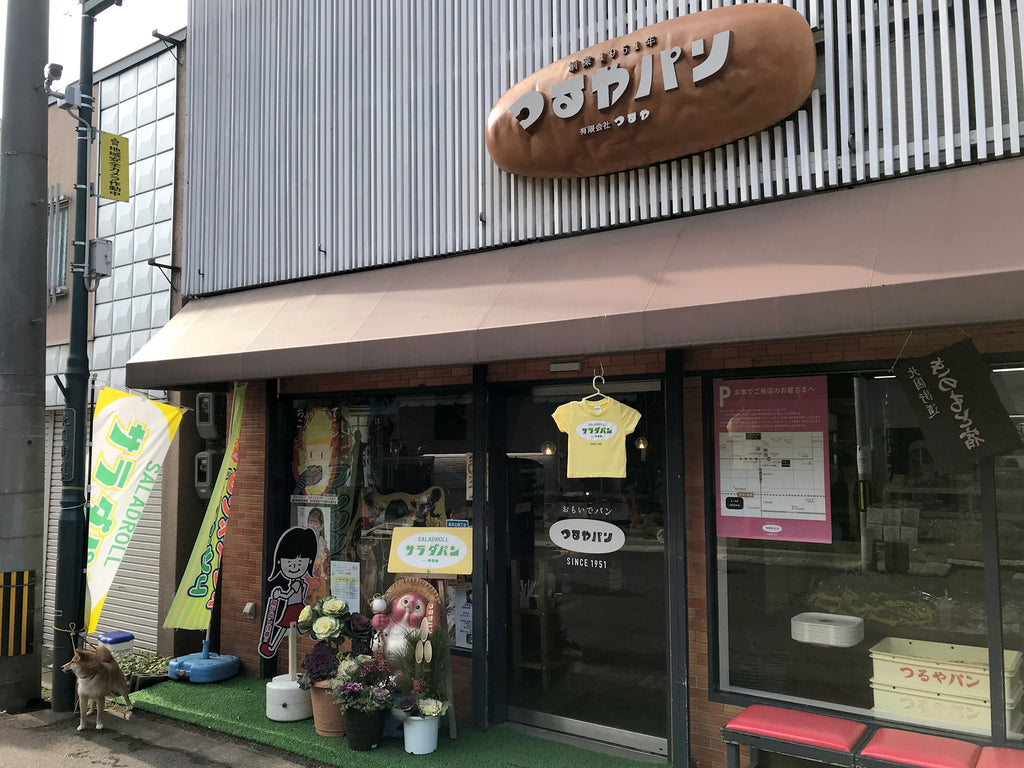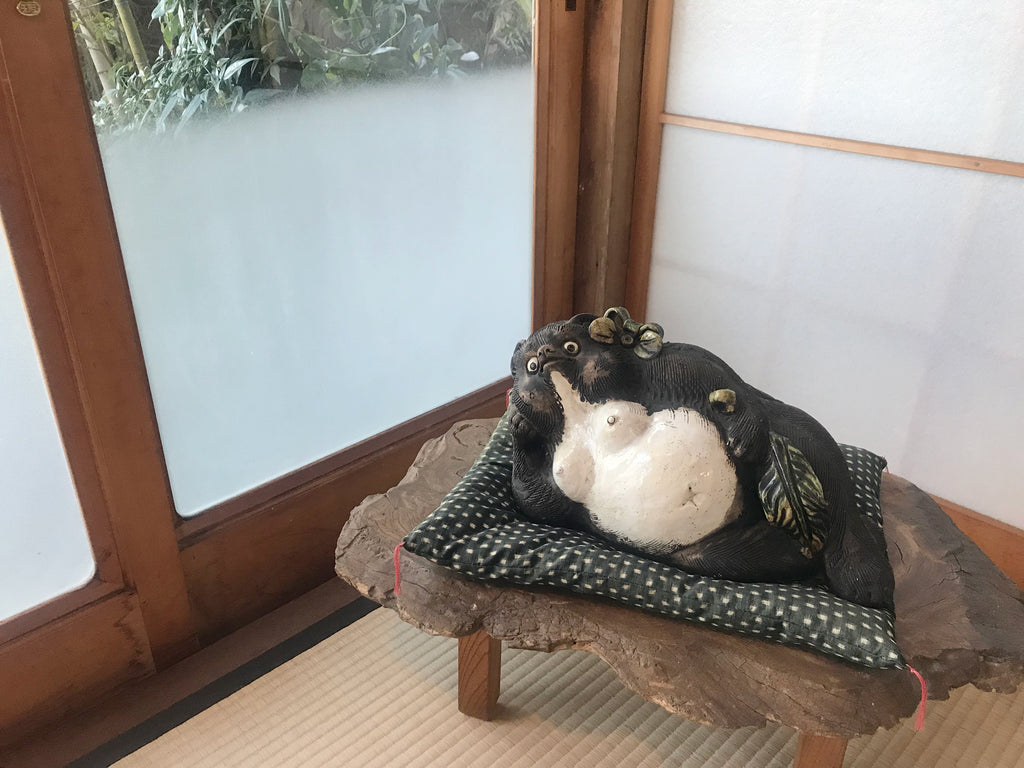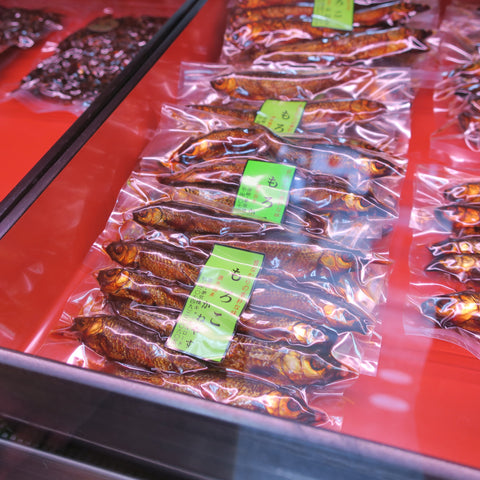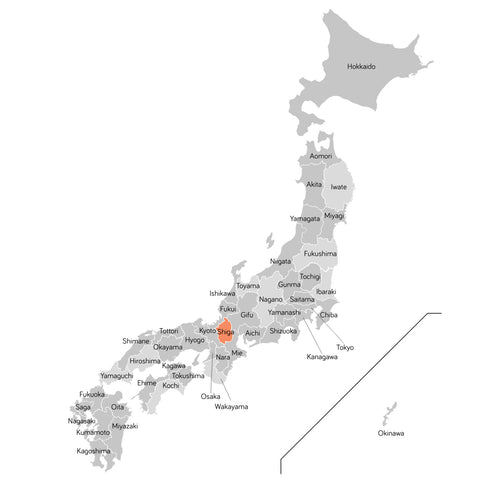
When I started to do some research on Shiga Prefecture, I quickly found out that the birthplace of tanuki statues is Shigaraki (a town on the southern tip of Shiga). I was intrigued because Shigaraki was also where our donabes come from – it turns out that it is the site of one of the "six old kilns" of Japan, considered sacred and historical. So my partner and I decided to make a special pilgrimage to Shigaraki.
 A kiln from the Shigaraki Ceramic Cultural Park
A kiln from the Shigaraki Ceramic Cultural Park
I've always been intrigued by tanuki since I was a child (and not just because of Tanooki Mario, who first appears in Super Mario Bros. 3). Tanuki statues made from ceramic are usually found outside of shops and restaurants. They welcome you with their wide smile and big belly.
 A tanuki in front of Tsuruya Pan in Kinomoto, Shiga
A tanuki in front of Tsuruya Pan in Kinomoto, Shiga
I always thought that tanuki embodied Japanese humor accurately. It's a little slapstick (big eyes, big belly), a little surreal (the tanuki is known as a shapeshifter), and a little perverted (ahem, the large ground-sweeping testicles).
Shigaraki is pretty far out which is what I liked about it. You have to take a one-man car (a train operated by one driver only, with no conductor) that had images of tanuki and ninjas all over it (Shiga is also the site of Koka Ninja Village).

One-man cars are very charming and you usually come across them in very rural areas of Japan. This one felt like it was powered by diesel, and it reminded me a little of the Skunk Train in Mendocino.

As you rode in the one-man car, you felt like you were disappearing into the forest and away from civilization. When you get to the other side, it opens up to a the valley, and a sea of ceramic tanuki greet you.
 Tanuki on the platform at Shigaraki
Tanuki on the platform at Shigaraki
All of the pottery shops also had Shigaraki wares including donabe, sake vessels, and beer cups:


Modern interpretations of tanuki drying out before a firing:

Impressive rows of tanuki lined up in parking lots:

There were freaky depictions of tanuki...

... a little rustic...

... super sporty...

... tanuki toting chopsticks...

Tanuki are commonly displayed in front of businesses for prosperity, protection, and stability. Tanuki represent eight special traits:
1. Sedge hat (rice paddy hat) which symbolizes that you are safe from disasters.

2. Big eyes mean that you pay special attention to your customers.

3. A book that keeps track of your orders, so you can accept credit or cash.

4. The tanuki always holds a sake bottle, which means you'll never be hungry or thirsty.

5. The big tail is for stability in business even through the rough patches.

6. The big belly of the tanuki means that you can keep calm during turbulent times and make decisions that take guts.

7. A big smile, which is very important for any business!

8. Last but not least, the tanuki's oversized testicles symbolize having lots of money and gold. Big balls = big gold!

After all this, it's hard to believe that tanuki are actual real animals. They are often translated into English as "raccoon dogs" or "badgers". This is misleading though because tanuki are not raccoons, dogs, nor badgers, they are their own thing. It gets its name "raccoon dog" because it looks like a raccoon, but it is genetically closer to a fox.
 Photo by
Photo by
When I came home back to California, I wanted to dig a little deeper into tanuki, so I watched Hayao Miyazaki's Pom Poko. It helped me gain a deeper understanding of how tanuki are perceived in Japan – as lazy, funny, resourceful, tricky creatures that remind them of their rural past. And as with all of Miyazaki's movies, there's humor, but also a underlying environmentalist message.
Here's the trailer for this joyful movie:
I leave you here with Kayoko's spirit animal:

If you are intrigued by tanuki as much as I am, I would recommend a stop in Shigaraki the next time you visit Japan.




Comments (1)
Great post! Loved seeing the tanuki during our visit to Japan last year and your blog helps to remove the mystery of these queer little sculptured animals.